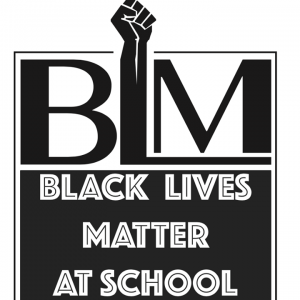
(Source: Edsight.ct.gov, CT SDE, 2018)
This week kicked off a Black Lives Matter Movement Week of Action in Schools. A key demand was the addition of Black teachers, which has become a national discussion. As a result of school closures, the Hartford Public Schools may be going in the exact opposite direction by closing schools with high proportions of Black and Latino teachers.
Several weeks ago, the Hartford Board of Education voted to close Milner, Simpson-Waverly, and Batchelder school. In addition to questions about following Board policy, actual benefits to parents, and arbitrary reasoning, there are issues with regard to a disproportionate impact on mostly Black, and to a lesser extent, Latino teachers.
Traditionally, Hartford has had one of the highest proportions of Black and Latino teachers in the State of Connecticut likely due to a combination of factors including job discrimination and a desire to work with Black and Latino students. In particular, Black teachers in Hartford have often worked in North End schools where there are large proportions of Black school children. However, since the mid-2000s, Hartford has lost substantial numbers of Black and Latino teachers. As I wrote a few years ago, the Hartford Public Schools’ decade-long decline in teachers of color could be the result of factors such as NCLB certification requirements, school closures and reconstitution, expansion of choice programs, and teacher temp programs like Teach for America. In short, when educational reforms happen that seek to disrupt governance and labor arrangements in schools with mostly Black and Latino students, then Black and Latino teachers often bear the brunt of these reforms given their historical positioning in these schools.
According to State Department of Education data, there were 1,992 teachers in the Hartford Public Schools in 2015-16. 462 of these teachers were Black and Latino. That’s about 23% of all teachers in Hartford are Black and Latino.
At the school level, there is a moderate to strong relationship between percent Black and Latino teacher and the percent of Black and Latino students. You can view the data visualization below to see how each school measures up in terms of percentage Black and Latino teachers compared to students.
At Milner and Simpson-Waverly, the proportions of Black and Latino teachers are much higher than most other schools in the district. At Simpson-Waverly, (mostly) Black and Latino teachers are 20 out of 34 teachers or 58.8% of all teachers at the school. At Milner, (mostly) Black and Latino teachers are 15 out of 35, or 42% of all teachers at the school. Far less impacted in this regard, Batchelder school has 20% Black and Latino teachers.
Simpson-Waverly and Milner have among the top five highest proportions of Black and Latino teachers in the entire school district. Closing all three schools impacts 44 Black and Latino teachers out of 462 Black and Latino teachers, which is just shy of 10% of all Black and Latino teachers in the district. Closing these three schools potentially smashes the ranks of teachers of color, particularly Black teachers.
In sum, when schools with high proportions of Black and Latino students close, Black and Latino teachers bear a disproportionate impact of these closures including loss of jobs. In the case of Hartford, what will happen to these Black and Latino teachers and the relationship with their students if these schools close?
Note: 2015-16 is the most recent data on teacher demographics from the CT State Department of Education. So there may be changes since 2015-16 to now, 2017-18. Asian and American Indian teachers are included in the chart here. In addition to teachers, there are paraprofessionals educators, specialists, and other staff in a school that shape the schooling experience. The Edsight does not currently have that demographic data available.





